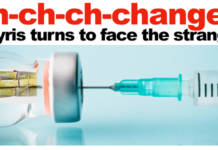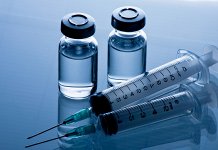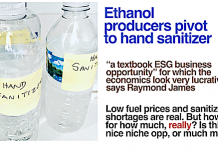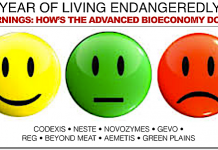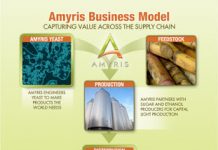Jim Lane 
What makes Amyris (AMRS), Amyris? We look at the products, the evolution of the story, the partners, the focus on yield, and deeper into the story of Rate.
“I mean, man, whither goest thou? Whither goest thou, America, in thy shiny car in the night?” “Whither goest thou?” echoed Dean with his mouth open. We sat and didn’t know what to say; there was nothing to talk about any more. The only thing to do was go.”
Jack Kerouac, On the Road
Amyris experienced last month what CEO John Melo referred to as “our fastest product start”, and you might wonder, was it a fuel, a chemical, a fragrance, a flavor, a biotech service platform?
None to all of the above. It’s a product called Muck Daddy, a high performance, fast-acting hand cleanser. And if the brand sounds just a little bit like Puff Daddy, that’s perfectly OK.
The Many Faces of P.Diddy and P.Amyris
 There’s no better example than the artist known variously as Sean Combs, Puff Daddy, P. Diddy, Diddy, Sean John, and more recently Swag, to help us understand what a sustainable biotech company like Amyris is all about.
There’s no better example than the artist known variously as Sean Combs, Puff Daddy, P. Diddy, Diddy, Sean John, and more recently Swag, to help us understand what a sustainable biotech company like Amyris is all about.
When I first heard of Sean Combs, it was in his years as founder of Bad Boy Records, an influential East Coast rap label that was home for Biggie Smalls (The Notorious B.I.G). I was working out of the West Coast in the mid 90s, booking some hip hop acts for AOL Live! sessions the likes of Coolio, Cypress Hill and KRS-One.
Then, he was Puffy, and I’ve kept tabs on him since; he came forward as a performer in 1997. Daddy, Diddy, Swag it takes a lot of identity and costume changes to survive and thrive in the world of hip-hop. Underneath, there was always the artist and the business mind.
Back to biotechnology. Over the years, we’ve had a lot of identities for Amyris, too. The changes and re-directions annoyed some of the people all of the time, and all of the people some of the time.
It’s fair to say that people had just got the idea of what Amyris Biotechnologies was all about, when suddenly it became Amyris, Inc. There was subsidiary called Amyris Fuels, then there was an announcement that Amyris was exiting fuels.
There was Amyris, the Biofene company. Amyris and the ‘Fene economy. Just when everyone figured out what ‘Fene was, there was an announcement that Amyris would no longer focus exclusively on farnesene. (‘Fene appears to be the DJ identity of biofene or farnesene, though Puff Fene or P. Fene might have had more street cred).
Somewhere in there we had Novvi, the Amyris-Cosan JV for lubricants and high-performance oils. Then there was Amyris, makers of Biossance cosmetics. There was the Amyris µPharm discovery and production platform, announced this year, which sounded an awful like the Amyris Biotechnologies of old.
And we had the Paraiso plant, until it was the Brotas plant, and we had the Usina San Martinho JV to build more capacity, until we didn’t. It takes a lot of identity and costume changes to survive and thrive in the world of the advanced bioeconomy. Underneath, there were always the artists and the business minds.
So, you get the idea. There have been more Amyris identities than probably Mickey Rooney had marriages. But it never occurred to me, then or now, that the changes were a weakness. Change, that’s Amyris; the company is as hard to pin down as Madonna or Bob Dylan, and though occasionally Amyris is as popular on Wall Street as when Dylan went electric at the Newport Folk Festival in 1965, it’s the stuff of longevity: change that is, when the change is from purpose.
When Faster Gets Faster
In the Digest Universe, we place the company as a pure Design-Build-Test-Learn velocity player, one of the handful of Moore’s Law companies that just gets faster and faster and more automated.
If you walk through the Amyris labs in Emeryville, the first thing that strikes you is the shrinking footprint of technology and the people. Not that they have fewer people, or fewer machines. But the machines are immensely smaller and the people do more interesting things. Things you take for granted even in Big-Ticket, High-Priesthood academic labs like, lots of undergrad and grad students moving a lot of stuff around in a physical way, the old analog assay. It’s like, gone.
What we see are designs scaled up to 200 liters in the lab and related pilot units, then transferred to Brotas, in 1000X scale-ups.
The Big Stumble
Just a few years back, Aymris transferred a tremendous amount of capital, hope, and R&D from demo-scale to full-scale at Brotas, and the scale-up stumbled, spectacularly. There was the hype, then the peril, right out of Apollo 13. “Emeryville, we have a problem.”
In this case, as the yeast were multiplied up to fill the big fermenters, they evolved slightly in each duplication step, 60 in all. Now, keep in mind that these organisms really weren’t designed by Nature to make this much farnesene. So, the mutations generally were in the direction of reducing farnesene production, and translating that carbon back into organism growth. The low-growth mutations would rapidly take over the fermenter. Amyris got day 1, day 2, day 3 normal, day 4 master alarms going off everywhere as the production dropped off.
So, Design-Build-Test-Learn until they found a way to suppress the growth of the mutations, by denying an amino acid (associated with the farnesene pathway) vital to organism growth. Eventually, problem solved. And the fast pace of 2011’s desperate innovation has become table stakes at Amyris 2015, or Diddy Amyris, or Amyris 5.0, or what you will.
Design the code, load the DNA, execute it into yeast, 120,000 permutations a month, of which 118,000 are random evolutions based around the 2000 designed projects. The focus? The search for farnesene yield.
As R&D Director Joel Cherry put it, “you can chase an enormous number of interesting scientific targets, most of which are valid and all of them have proponents. But at the end of the day, we needed to have focus, and for me it is a very simple equation. We buy sugar and we make product, and that makes yield the most important factor. So we focused on yield.”
To the extent today that the production organism has 80,000 new DNA base pairs, and 40,000 of the old ones knocked out out of 12,000,000 base pairs in the original DNA. That’s around a 1% variation in around 10 years. And keep in mind, this is not the rate of mutation this is the rate at which changes have become a fixed part of the production organisms. Successful evolutions, if you will.
Clocking Amyris Against the Pace of Evolution
Contrast that with the molecular clock hypothesis, which suggests that two bird species, to give an example, diverge at a rate of 1% per 500,000 years. 1% in 10 years, vs 1% in 500,000 years. At the rate Amyris is evolving its farnesene code, it would have evolved by a factor greater than the genetic difference between humans and chimpanzees, in less than 50 years.
Put another way, in about 1000 years, you could, extrapolating the math in ways that will surely get the Digest a nastygram from somewhere, replay the entire evolution of life on earth. At the current rate. Which is speeding up. Which is why working at Amyris has to be more interesting than working at the most cutting-edge gaming company.
Let’s take it a step further for a second. Let’s apply some Moore’s Law metrics to the speed of invention, at a genetic level. Let’s say the pace at which we can identify and deploy a new gene halves every two years. Is that p
ossible? I don’t know. To be honest, here in Digestville we can’t tell you what the oil price will be tomorrow, exactly and for sure. Looking down the road 20 years in the world of genetic development, that’s about as easy as understanding the conditions beyond the event horizon of a black hole.
One thing we do know. The cost of a basic decoding of a genome is, in fact, coming down even faster than the velocity of Moore’s Law. So, it’s speculative but not without foundation.
In the basic math of our scenario, the entirety of the evolution of life on earth could be played out in a lab, in some number of years, in a matter of seconds.
Which is to say, evolution of target organisms, conducted entirely by robots, controlled by algorithms written by semi-sentient computers, running on processing schemes controlled by other semi-sentient computers. That is to say, computers that design-build-test-learn, with the emphasis on learning. Controlled in turn by humans, who generally are focused on guiding computer targets based on products of interest, and in charge also of designing and improving the process by which computers learn.
Consider that a time will come when you gladly take a daily capsule, which contains daily updates for your body new defenses against discovered ills, or potential threats based on scans delivered by advanced imaging and received and processed by these innovative biological engines. You’ll receive the cure before you show the symptom.
Velocity
Over at Amyris, you’ll see it happening now, if you look carefully enough. Not just at the plastic bottles of Muck Daddy, the Biossance creams, the flasks of renewable diesel, or the 140 million treatments for malaria by Sanofi using the underlying technology upon which Amyris is based.
Instead, look at the robotics, they’re spreading. The pace, which is quickening. The sense of mission, which has not diminished. For sure, we don’t see the enthusiasm on Wall Street.
But keep in mind, these are the guys who spent 20 years not figuring out Bernard Madoff don’t be put off by the high salaries and flashy suits, Wall Street minds are a mile wide and a millimeter thick, and most of the brain mass there is devoted to guessing when the Fed will move on interest rates.
Instead, look not to Wall Street, or even Main Street, but look at Product Street. Firmenich, for example. No one’s partnering with Amyris for skin cream formula, or flavorings. They could come up with them in their own labs. They are partnering with Amyris for speed, pure velocity. When you crush timelines, products that were once in their “we can’t ever” fall over the corporate hurdle into the Department of Let’s Get Going.
That’s why Amyris, which once pinned all its hopes on Farnesene, has become instead the home of Farnesene and Friends. There are three molecules in production at Brotas now. Expect a fourth this year. Five, six, seven and eight if you imagine those are well down the development pipeline, you wouldn’t be arrested on suspicion of smoking hashish.
Hear about Yield, think about Rate
But think upon this. Unless you are somewhere in the Bay Area and in the synthbio community, or working at a development partner where you can deep dive into hard data under the safe cover of DNA, most of what you will hear is coming from a public company, trying very hard to simplify and make more popular a story that they need to tell on Wall Street. As the stock prices goes, so does the company’s capital strength and its ability to fund its future.
So, most of what you will hear is not about “velocity” and “Design-Build-Test-Learn”. No one’s going to say anything to Wall Street about “assay noise” or “robotics platforms” or the pace of genetic manipulation. The story will be told mostly in terms of this-many-units of Muck Daddy and that-many-units of Biossance products, and that-many-tons of biofene sold to this-many-customers. Sometimes, you’ll hear specific brands, especially if they are blue-chippers. And you may hear about the company building more and more direct links to the retail customer where they see a niche and don;t currently have a partner who sees a place in the value chain for themselves. As in Biossance, for example.
All those are good things.
But you and I might take a moment and look beyond the weather of today and the weather of the next quarter as we do in looking towards climate change and outcomes for the physical environment in the next 60 years. And you’ll see more lines of R&D, more products appearing, more yield improvements. It’s the More Law, even more than Moore’s Law. As in “faster”.
If it’s yield in the fermenter that matters to companies like Amyris even more than rate and titre it’s entirely the other way around in looking at the company. There, it’s rate. As in pace of innovation. Even more than yield which is to say the result in products. You see, in the future, companies that produce one monster product each decade or so that’s the old world of Yield.
But now it’s about partnership, and big companies look to small companies because they are nimble, and that’s about rate.
Jim Lane is editor and publisher of Biofuels Digest where this article was originally published. Biofuels Digest is the most widely read Biofuels daily read by 14,000+ organizations. Subscribe here.

